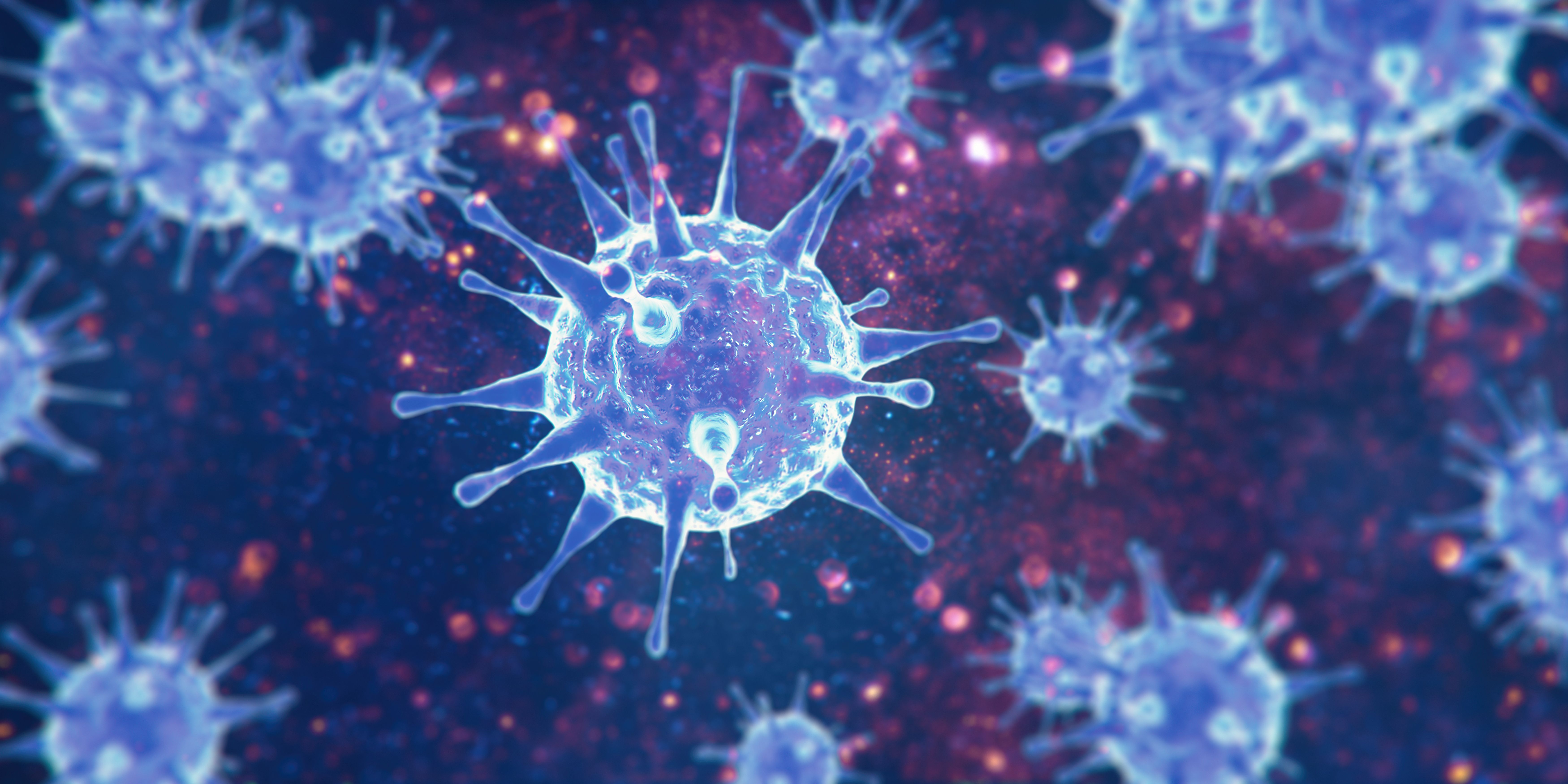Heterogeneous Outcomes Shown With SARS-CoV-2 Vaccine Use in Patients With cGVHD
Patients with chronic graft-versus-host disease who received a full series of the SARS-CoV-2 vaccine showed varied immune responses, regardless of their baseline characteristics.

Concerns about protection against infection or severe COVID-19 disease in patients with chronic graft-vs-host disease (cGVHD) were highlighted based on an analysis of humoral and T-cell responses (TCRs). The study showed heterogeneity in immune responses to the SARS-CoV-2 vaccine.
Overall, 75% of patients with cGVHD who were on immunosuppressant medication had humoral response to the vaccine, two-thirds of whom also had a TCR. The other 25% had neither humoral or TCR. Additionally, a third dose was seen to further amplify humoral response, but it was not commonly associated with a TCR if it was absent in the original series.
“There are some groups who have advocated testing for antibodies which may direct subsequent doses or suggest alternate treatment options for these patients,” Shivaprasad Manjappa, MD, MPH, said during a presentation of the data the 2022 Tandem Meeting. “However, it is still yet to be determined whether immune response testing directly correlates with protection. There are larger studies ongoing to determine that, but as of now, it’s open to debate.
Investigators aimed to determine if dysfunction in the immune system that results from cGVHD has any effect on the ability of the SARS-CoV-2 vaccine to confer protection against severe COVID-19–related disease.
Patients with cGVHD following an allogeneic stem cell transplant (n = 32) were administered 3 doses of the SARS-CoV-2 vaccine. Baseline testing was performed on day 0, or the day of the first administered dose; after the initial series, around day 25 (interquartile range [IQR], 21-35); before the third dose; and after the third dose, around day 32 (IQR, 21-41). Investigators assessed immune response by looking at humoral response and TCR. Humoral response was determined by anti-spike (anti-S), neutralizing antibody (nAb), and anti-nucleocapsid (anti-N); T-cell response was determined using ImmunoSEQ T-MAP COVID, a T-cell receptor sequencing-based approach.
T-cell responses were assessed using polymerase chain reaction (PCR) to amplify the highly variable CDR3 region of the TCRb gene, which was then next-generation sequenced to create a unique TCR repertoire. This was queried against previously seen SARS-CoV-2–enhanced sequences and was used to determine the proportion of SARS-CoV-2–specific TCR sequences for individuals. Unique TCRs represented clonal breadth and the extent of expansion represented clonal depth. These methods of response criteria are reliable methods of assessing TCR healthy and nontransplant immunocompromised patients following both vaccination and infection.
After the initial series, 17 patients (53%) were considered positive responders, having had both humoral response and TCR; 8 patients (25%) were negative responders, with neither humoral response or TCR; and 7 (22%) were mixed responders. Thirteen patients came off the study after the initial response due to lost follow-up (n = 9), relapse (n = 3), or death (n = 1), leaving 25 patients to receive a third dose. Of those, 16 patients were positive responders, 1 was a negative responder, and 8 were mixed responders.
Correlating T-cell clonal response with humoral response showed that breadth and depth of response was closely linked with anti-S and nAb titers and were statistically significant, similar to what’s noted in non-immunocompromised populations. Those with a humoral only response, or mixed responders, experienced a modest increase in T-cell clonal depth. Spearman correlation was statistically significant for breadth vs anti-S (0.625; P <.001), depth vs anti-S (0.816; P <.001), breath vs nAb (0.48; P <.05), and depth vs nAb (0.719; P <.001).
Impact of a third dose was limited to patients with data from all 3 time points (n = 15) as the characteristics from the initial cohort and the third-dose cohort were dissimilar.
“For these 15 patients, the immune response persisted even at 6 months after the initial series, and third dose significantly amplifies the antibody response,” said Manjappa, who is a research associate in the Clinical Research Division at Fred Hutchinson Cancer Research Center and acting instructor in the Division of Medical Oncology at the University of Washington in Seattle. “Interestingly, the T-cell response does not seem to produce that with the third dose.”
In all patients, 10 experienced cGVHD flare, 1 had asymptomatic COVID-19 infection, and 1 died of severe COVID-19 after a mixed response to the initial vaccine series. Notably, 3 patients with mixed responses after the initial series converted to a positive response after the third dose.
Of the 10 patients with cGVHD flare, 6 followed the initial series and 4 came after the third dose; flares were noted even in patients with no response. “It is unclear if this is related to the vaccine, concurrent medication taper, or other factors.”
There was no association between immunosuppressant medication and vaccine immune response. Immunosuppressant medications included prednisone (positive, 64.7%; mixed, 71.4%; negative, 87.5%), ruxolitinib (positive, 17.6%; mixed, 14.3%; negative, 25%), tacrolimus (positive, 17.6%), and mycophenolic acid (positive, 11.8%; negative, 37.5%).
The median patient age was 61 years (IQR, 39.5-65.5) with a median of 4.0 years (IQR, 2.1-5.6) since transplant. Six patients (18.8%) had mild cGVHD, 8 (25.0%) had moderate cGVHD, and 18 (56.3%) had severe cGVHD. The median time from cGVHD to sample was 36.3 months (IQR, 14.7-56.2) and 23 patients (71.9%) were on systemic prednisone. Vaccine types included Pfizer-BioNTech (75.0%), Moderna (21.9%), and Johnson & Johnson (3.1%).
Of note, Manjappa noted that there were no differences in baseline white blood cell, absolute neutrophil, and absolute lymphocyte count between responders and non-responders.
Reference
Manjappa S, Phi HQ, Lee LW, et al. Humoral and cellular immune response to Sars-Cov-2 vaccination in patients with chronic GVHD. Presented at: 2022 Tandem Meeting; April 23-26, 2022; Salt Lake City, UT. Abstract LBA3. https://bit.ly/3OFIdM9